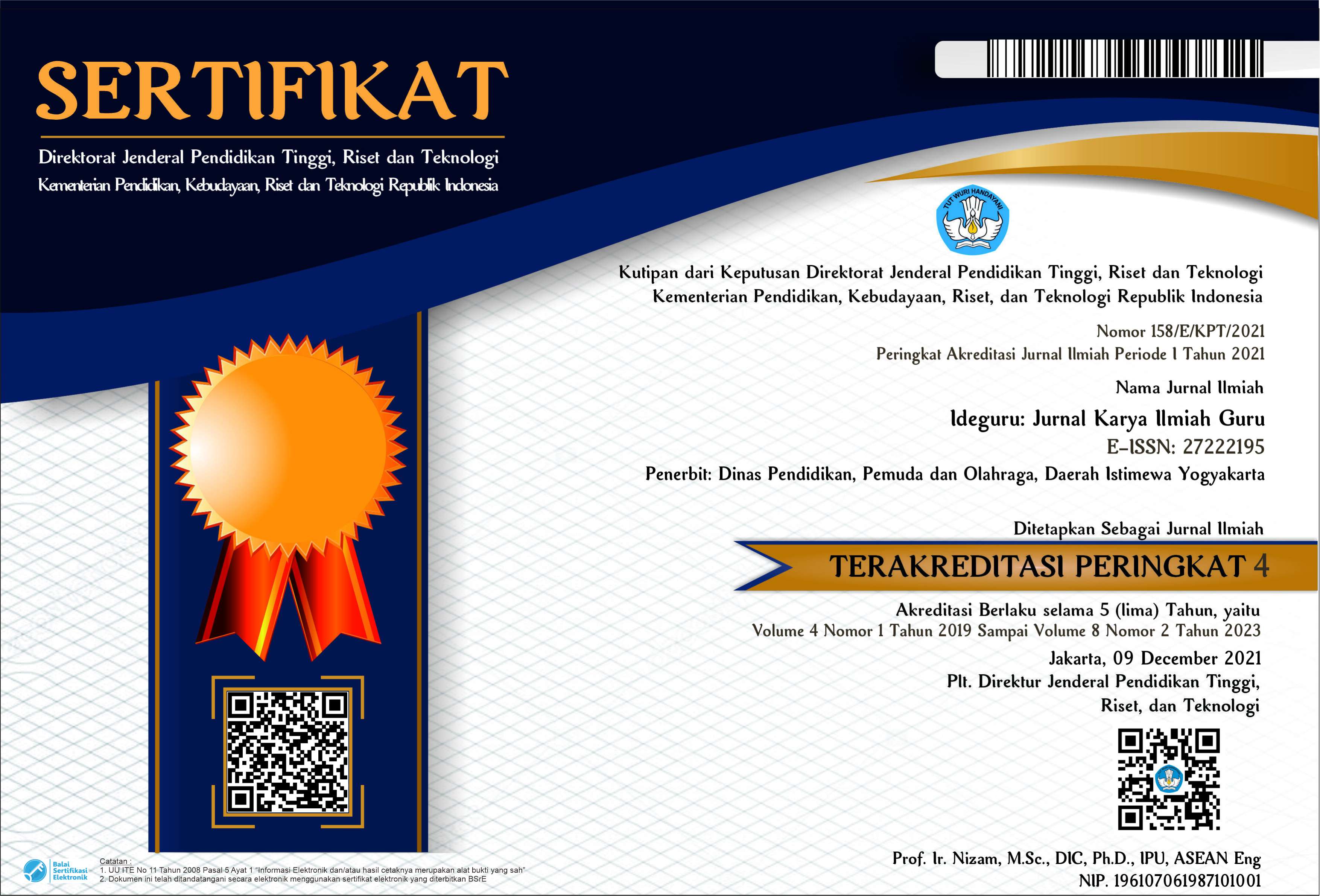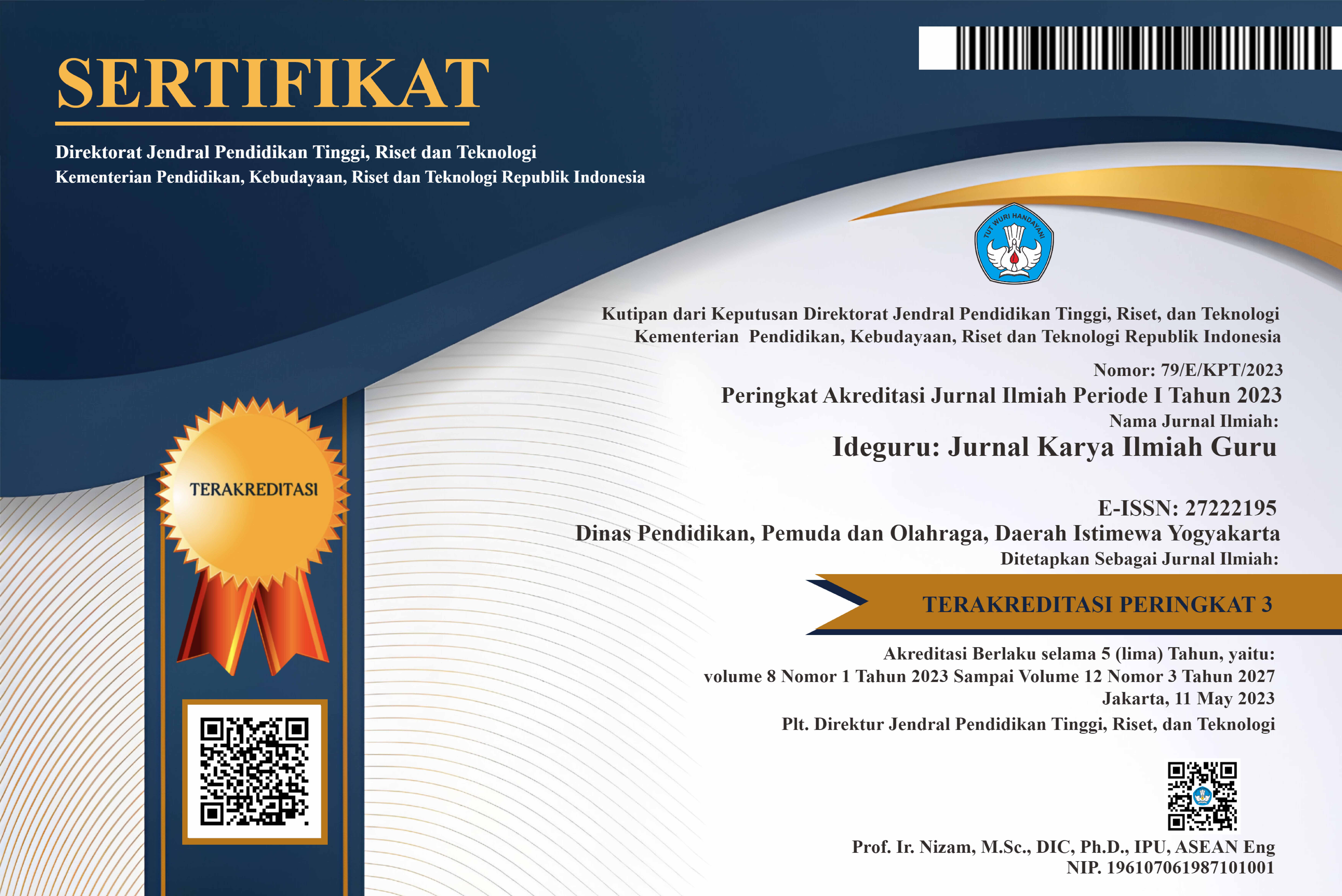Trigonometri, Geogebra, dan Infografis: Sebuah Prosedur Pembelajaran yang Sangkil dan Mangkus
Abstrak
Trigonometri merupakan salah satu bagian Matematika yang dianggap sulit oleh sebagian besar peserta didik. Salah satu yang harus mereka pelajari adalah menggambar grafik fungsi Trigonometri. Peserta didik mempelajari dan menguasai menggambar grafik fungsi Trigonometri dengan tiga cara yaitu menentukan koordinat titik, menentukan amplitudo dan periode, atau dengan menggunakan translasi. Pembelajaran melibatkan dua kelas ampuan penulis dengan harapan mereka mendapat maanfaat positif dari kegiatan ini. Penggunaan GeoGebra dilanjutkan dengan membuat infografis tentang grafik fungsi Trigonometri mengarahkan peserta didik dalam suatu prosedur pembelajaran yang efisien (sangkil). Mereka secara aktif mengolah ilmu yang diperoleh. Peserta didik mendapat kesempatan untuk mengolah sendiri ilmu yang diperoleh secara tepat melalui eksplorasi karakteristik grafik fungsi. Penggunaan sarana belajar di kelas berupa internet yang memadai dapat membantu proses pembelajaran, hemat biaya, waktu, dan tenaga. Penggunaan GeoGebra diikuti dengan membuat infografis adalah efektif (mangkus) untuk pembelajaran grafik fungsi Trigonometri ditunjukkan dengan kualitas hasil pembelajaran yang diperoleh peserta didik. Hasil rerata nilai tugas infografis KD 3.10 dan 4.10 pada kelas adalah X MIPA-1 adalah 92,69 dan 93,98 serta X MIPA-2 adalah 92,86 dan 94,05. Hasil Penilaian Harian-1 dan Penilaian Harian-2 berturut-turut adalah untuk kelas X MIPA-1 80,83 dan 83,22 sedangkan untuk X MIPA-2 adalah 81,94 dan 84,54. Dari berbagai hasil tersebut dapat disimpulan bahwa Trigonometri, GeoGebra, dan Infografis bila dipadukan dapat menjadi prosedur yang sangkil dan mangkus dalam pembelajaran.
Data Unduhan PDF
Copyright (c) 2023 Muflichati Nurin Azizah

This work is licensed under a Creative Commons Attribution 4.0 International License.

 DOI:
DOI:














